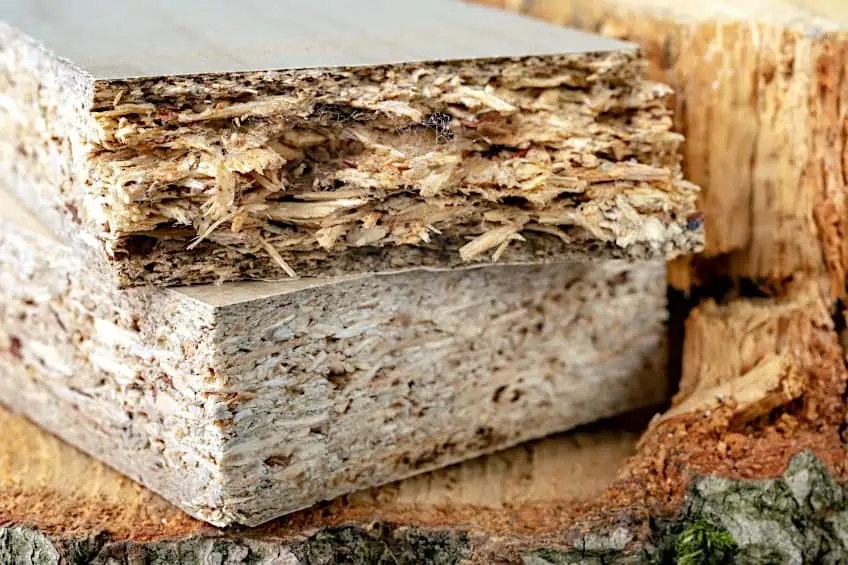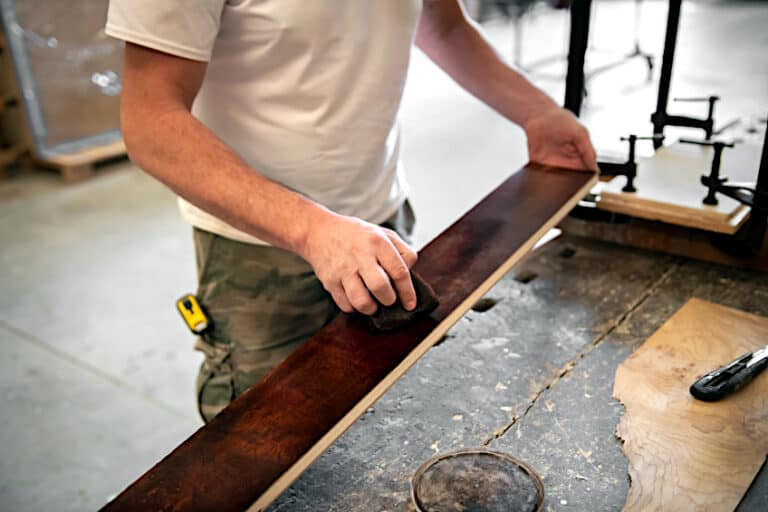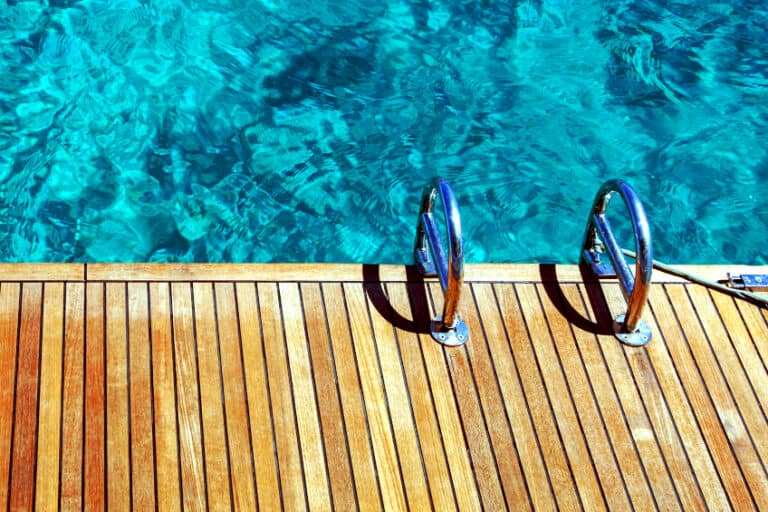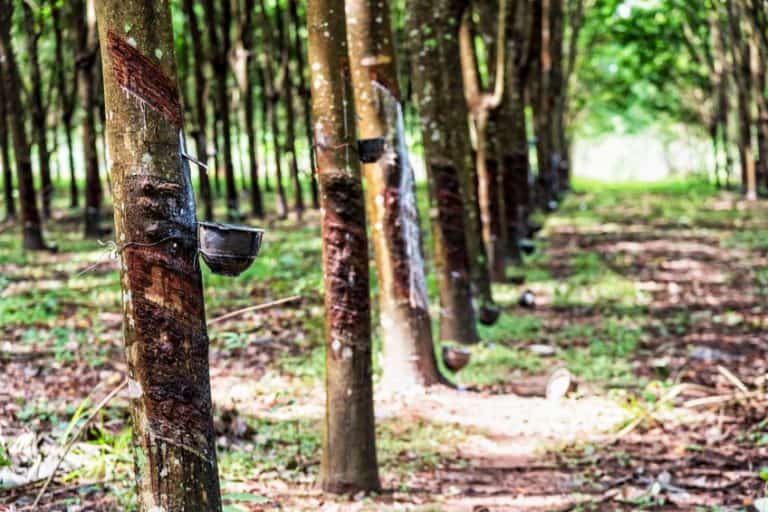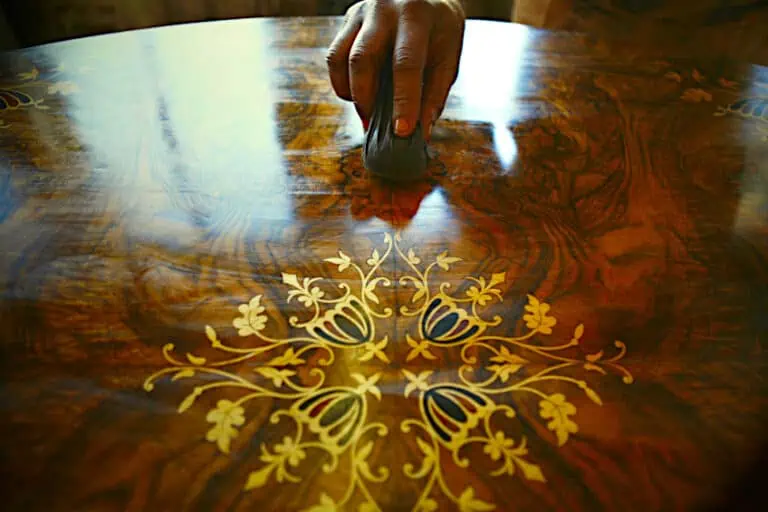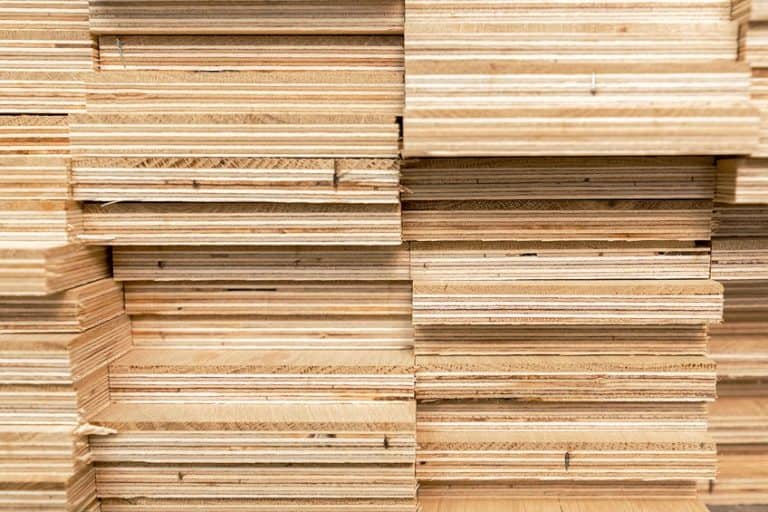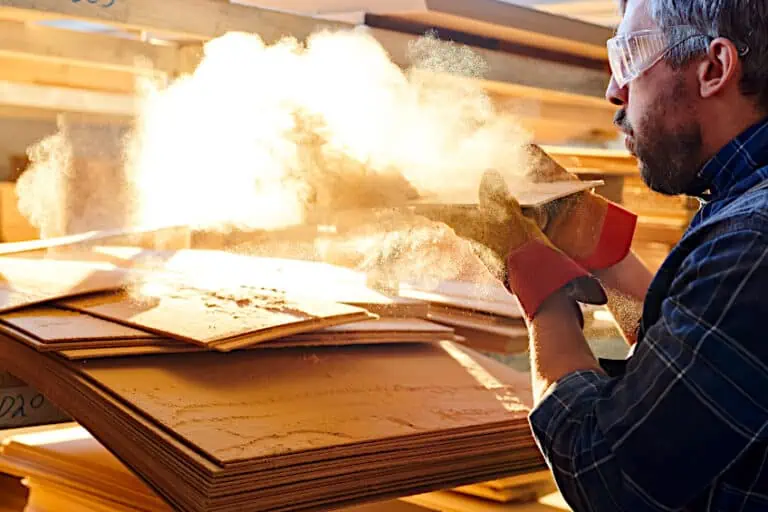What Is Particle Board? – Guide to Chipboard and Pressboard
These days, there are so many materials to choose from for construction and crafting applications. Thanks to certain technologies becoming cheaper and advancements in production techniques, materials like acrylic resin and carbon fiber have become more accessible to the everyday crafter. One material that has come a long way since its inception is particle board and considering that it was discovered all the way back in 1887 and we still use it today, we think it’s definitely worth having a look at. This being said, what is particle board exactly? What is particle board made of? What can it be used for? Let’s have a look at these and a few other common questions about particle boards.
Table of Contents
What Is Particle Board?
What is particle board, you ask? Put simply, particle board (also known as pressboard wood) is one of a large range of engineered woods that are used all around the world in various applications. Out of the three primary types of engineered wood – being plywood, MDF (medium-destiny fiberboard), and particle board – the latter is the least expensive, least dense, and least robust material.
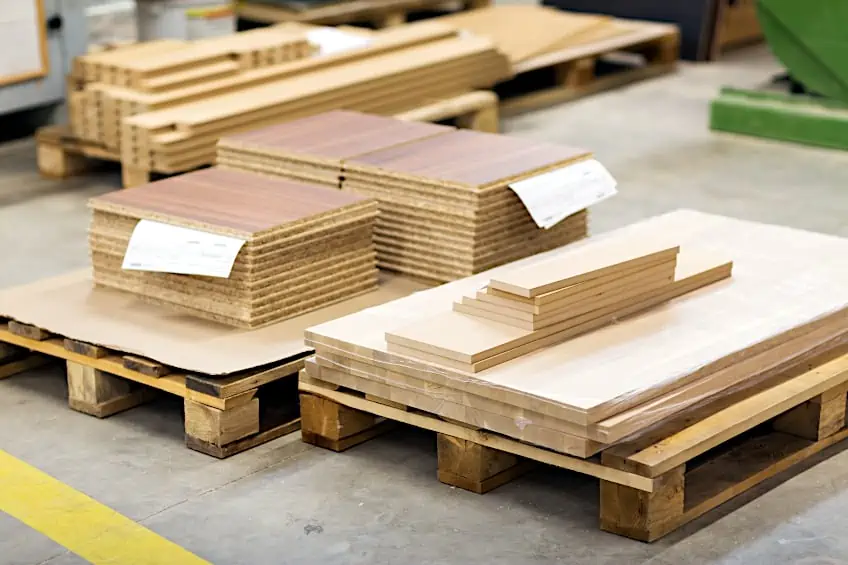
What is particle board made of? Well, particle board is made of a combination of wood fibers and other substrates, which are obtained by shredding solid wood board or using residual material left over from the production of the solid wood board.
These wood particles are combined with resin glues and heat-pressed until they form a “solid” block of particle board.
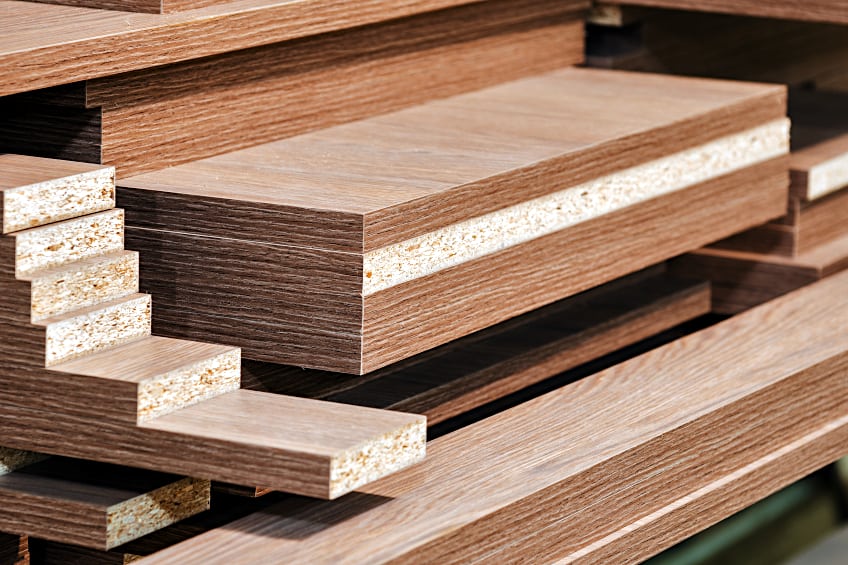
Particle board was actually discovered during the second world war in Germany.
It was made of left-over wood particles that had been heat-pressed and glued, which isn’t much different from the techniques we use today. These initial batches of particle board were known to many as artificial wood as they did not occur naturally, yet still consisted of naturally grown wood.
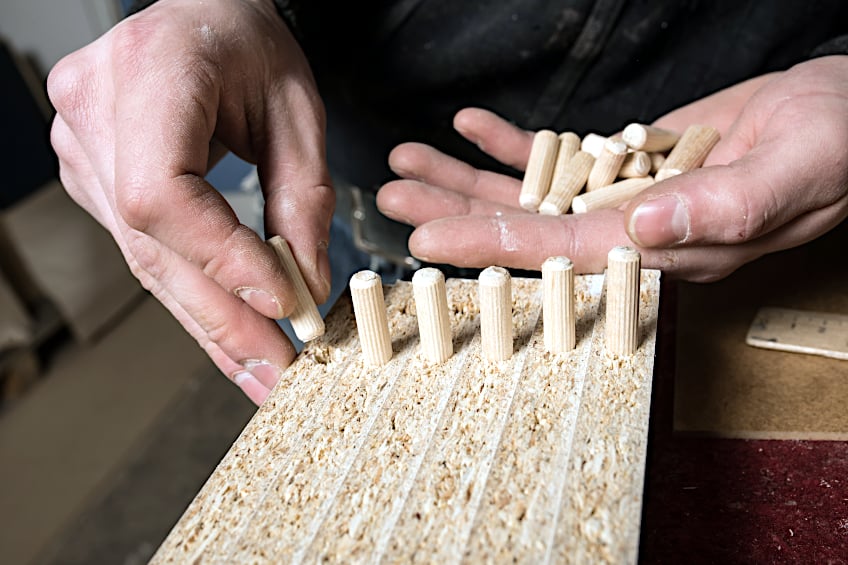
The term “particle board” or “pressboard wood” is used to describe a number of wood boards, but it’s important to understand the distinction between the different types of engineered wood. Why? Well, each type of engineered wood has different tolerances, characteristics, internal compositions, and price points, so the last thing you want is to mistake one for another.
There are different types of particle boards that vary in density, composition, and application.
One type of particle board that is used often is paperboard wood. Paperboard wood, as the name suggests, is made of layered paper which is heat pressed with adhesive to create a relatively strong engineered wood material. Paperboard wood is actually slightly stronger than regular particle board.
How Is Particle Board Made?
Particle board has been made pretty much the same way since its inception. All that you need for the production of particle board is some wood particles (like shavings or dust) and a good amount of formaldehyde, plus some epoxy adhesive.
The ingredients are all mixed together in certain quantities and then heat-pressed together to form a “solid” block of particle board.
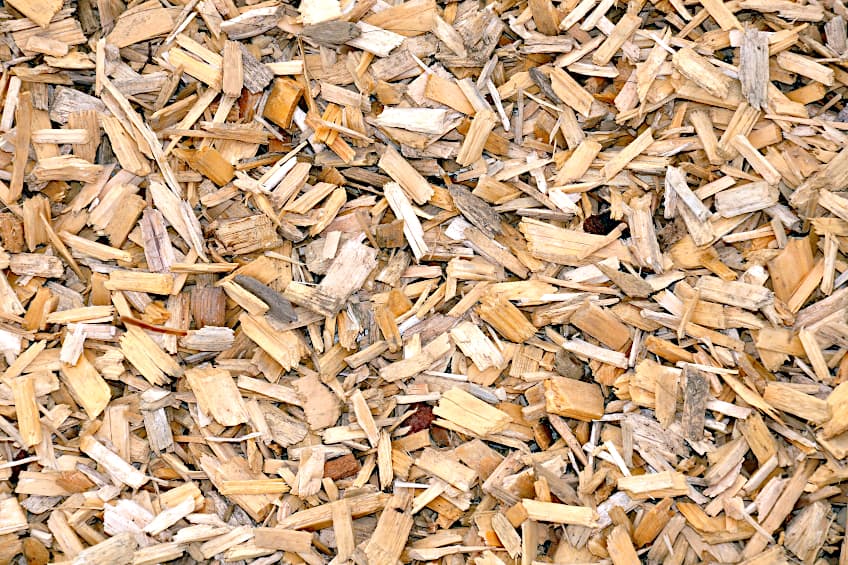
Pretty much the same method is used to create other engineered wood types like MDF, with the only difference being the size of the wood particles and the amount of adhesive being used. Particle board is simple and cheap to produce, which is why it’s possible to purchase such large quantities at such low prices compared to other materials.
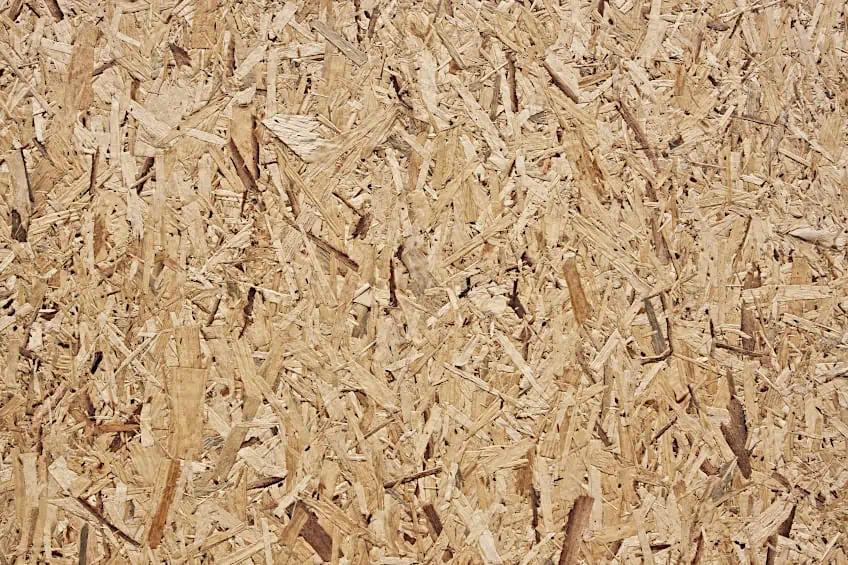
Keep in mind that the better the quality of the particle board the more you’re likely to pay for it. Why? Additional material and other production techniques are implemented to ensure that the wood has your desired characteristics, such as fire resistance, rigidity, water resistance, or a laminated/veneer finish.
What Are the Pros and Cons of Particle Board?
There’s no such thing as the perfect material, and just like any other material particle board has its specific advantages and disadvantages. Particle board might be extremely versatile, but it isn’t the best choice for every application, so let’s have a look at some of the pros and cons associated with particle board and its uses.
Advantages of Particle Board
Particle board tends to be a great all-around material that can be used for a number of everyday applications. It is exceedingly easy to use, and it happens to be readily available pretty much anywhere wood is sold. Particle board is also one of the most environmentally friendly options when it comes to construction and crafting materials.
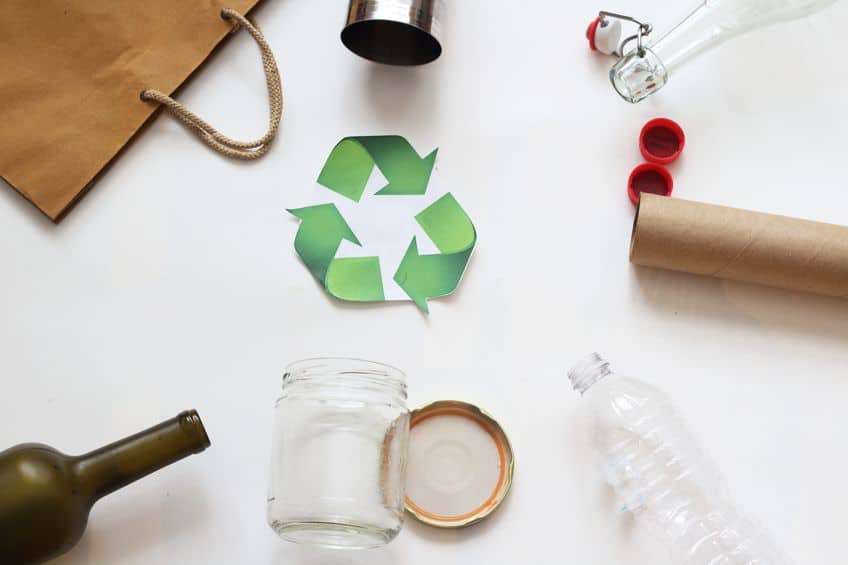
This is because most manufacturers use recycled wood in the production of particle boards, which is pretty cool considering that wood is one of the natural resources that has become extremely scarce these days. Particle board is not as dense as some other engineered woods and is actually classified as a “light-density fiberboard”.
Despite its lower density, a sheet of article board can be surprisingly heavy.
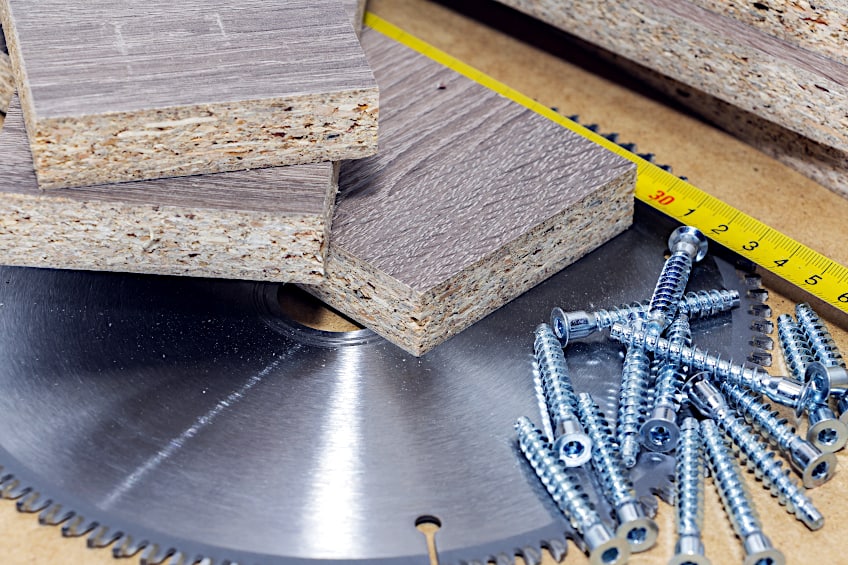
If you’ve never used engineered wood before you might be on the fence about giving it a go. Particle board in particular is really easy to use though since it has no knots, weighs practically nothing, and it’s easy to paint and protect! There are different types of particle boards to choose from too, but they tend to cost a bit more than the base variety.
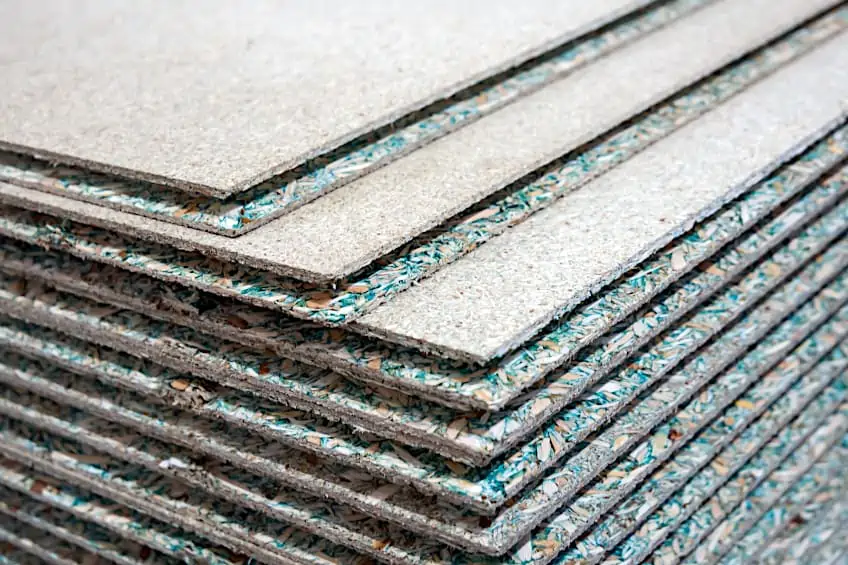
If you’re looking for a cheap wood alternative for DIY projects or simply want to do some crafting without paying an arm and a leg for decent material then plywood is a good option, especially if you’re on a budget. Particle board surfaces are really smooth too, so there is less preparation when painting or coating this material.
Disadvantages of Particle Board
As we mentioned previously, there’s no such thing as the perfect material, and particle board is no exception. Why? Well, even though particle board is affordable and readily available it isn’t exactly the most robust engineered wood out there. Particle board does very poorly when it comes to load-bearing and structural applications due to their lack of sustainable rigidity.
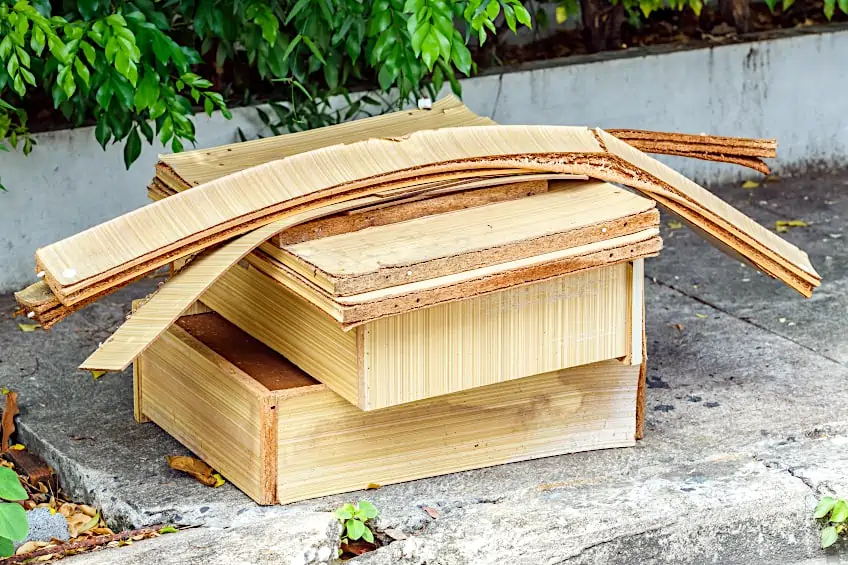
While particle board might be made of left-over wood fibers it isn’t completely carbon neutral. The process used to create both particle board and MDF uses chemicals that are both harmful to inhale and are considered pretty bad for the environment. Particle board also emits these chemicals during their degassing stage, which isn’t great either.
Particle board is also completely incapable of sustaining even short-term contact with moisture.
Whether the particle board is completely submerged in water or exposed to water vapor, it will begin to swell, crack, and eventually disintegrate. However, you could seal your particle board with epoxy if your budget and time scale for your project allows for it.
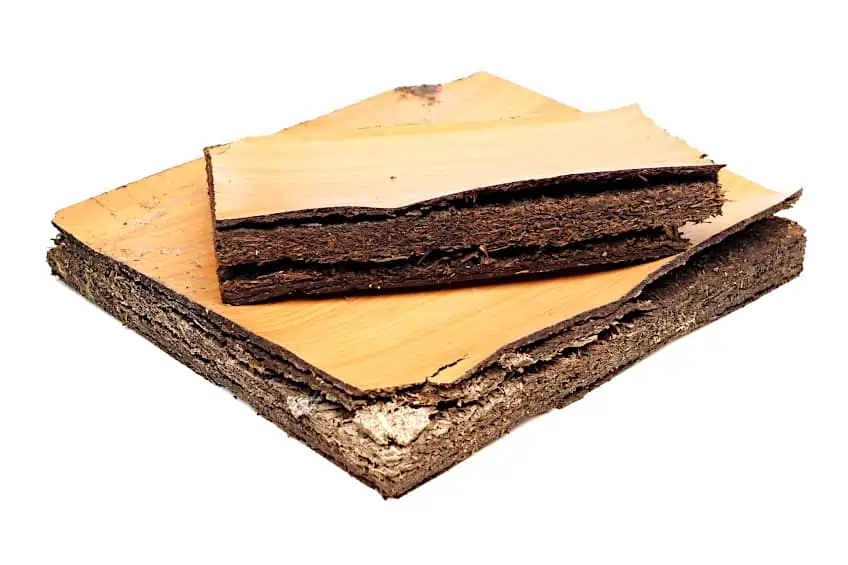
Particle board doesn’t do too well when it comes to impact and abrasion resistance either. Due to their low density and poor adhesion, the wood fibers that make up particle board cannot absorb these forces, forcing the material to disintegrate on contact. For the same reason, particle board tends to hold onto fasteners like screws and nails pretty poorly too.
- Affordable
- Uniform surface appearance
- Easy to modify with veneer
- Extremely light weight
- Environmentally friendly
- Insulates sound well
- Extremely easy to use
- Not very strong or durable
- Produces formaldehyde when degassing
- Deteriorates when in contact with water
- High susceptible to impact and abrasion
- Does not accept fasteners well
- Produces a lot of dust when cut or sawn
- Not naturally flame retardant
What Is Particle Board Used For?
Particle board is pretty versatile despite its flaws. Considering that the material is lightweight, cheap, easy to use, and readily available, it should come as no surprise that particle board uses are essentially only limited by your imagination.
Since we’re just getting to know the material though, let’s have a look at a few of the most common particle board uses.
Flooring
This might come as a surprise to you considering how fragile particle board can be, but it is commonly used in the creation of flooring. Particularly strong particle boards can be used in the creation of both permanent and temporary flooring, and in certain instances, you can even find particle board used as an underlayer for other types of flooring materials.
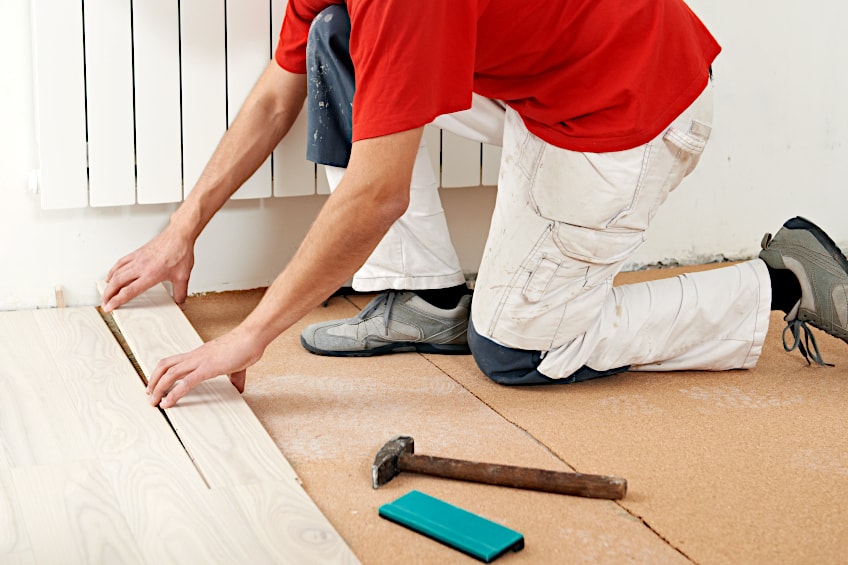
Doors
While most of us don’t really know what the inside of our doors looks like, particle board is often used to fill the inside of solid core doors. It works well as an insulator for both heat and sound, and since it’s so cheap you can use loads of it to ensure your space is both warm and private! It can also be used to fill trim and other aesthetic pieces.
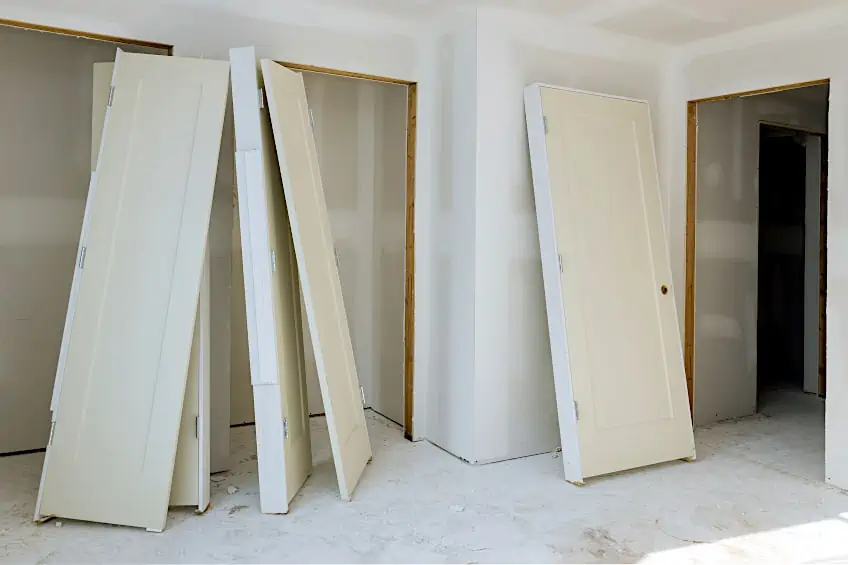
Ceilings
While we wouldn’t recommend using particle board to create a roof, it can be used to create ceiling boards. Again, this is because particle board is inherently a good insulator of sound and noise, which is ideal for communal living situations where dwellings are stacked above and below one another.
However, if your water heater breaks you will need to replace the affected panels (if not all of them).
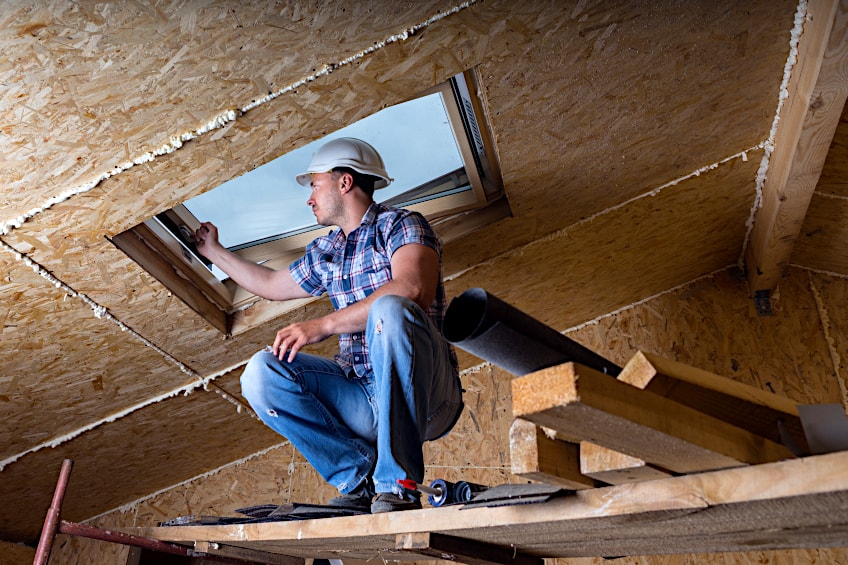
Furniture
Particle board was initially used to create mass-produced furniture. It can be used for the base of drawers, couches, seats, and tables, and can even be used as stuffing for trim pieces on furnishings too. Additionally, it can be used in the creation of doors for cabinets like those found in kitchens and bathrooms, but they need to undergo certain treatments beforehand.
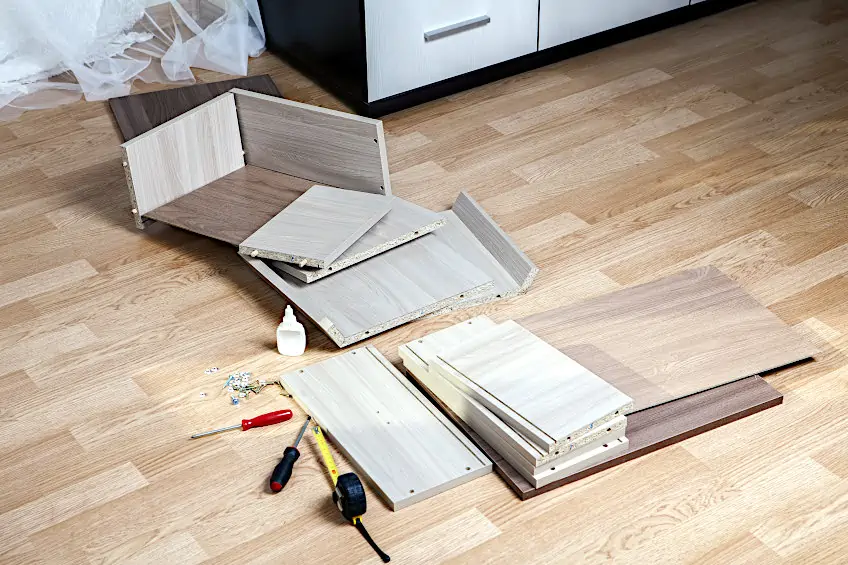
Speakers
As we mentioned previously, a particle board makes for a great insulator of sound. It’s also worth mentioning that it can be used to direct sound in a certain direction, which is why this engineered wood is one of the most commonly used materials in the construction of speakers and speaker boxes, especially ones found in automobiles.
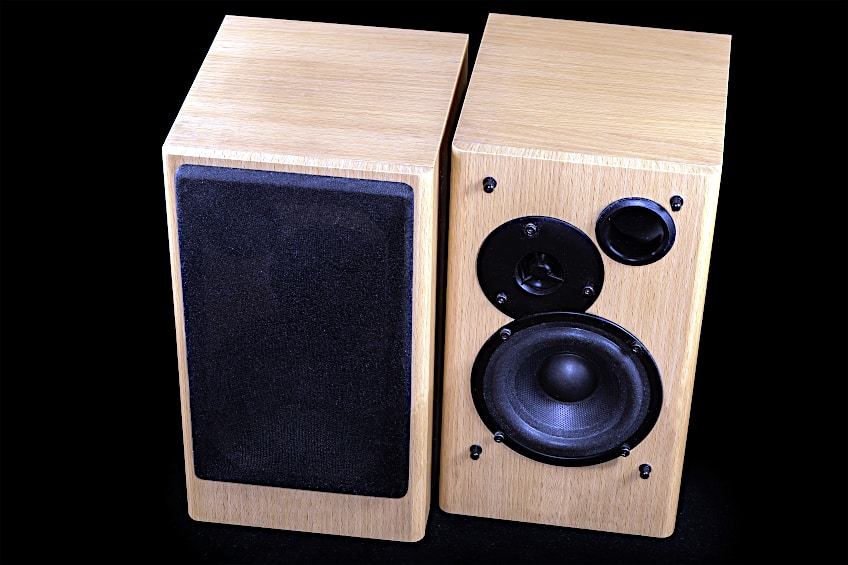
Is Particle Board Expensive?
Is particle board expensive? In short, no. Particle board is by far the cheapest of the three primary types of engineered wood used today. This being said, there are different grades of particle board that are used for specific applications, and each tends to be differently priced. Special-use particle boards tend to be pretty expensive.
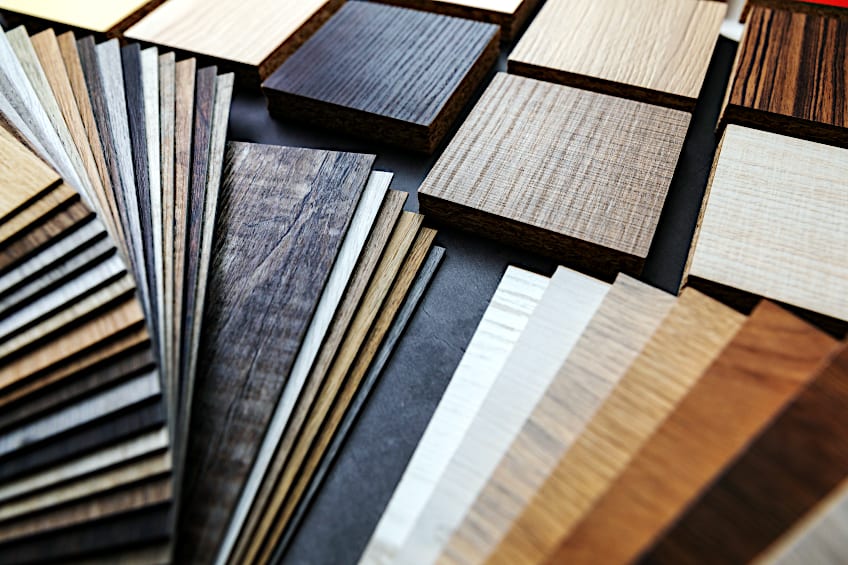
Purchasing raw, single-layer particle board is inexpensive because there isn’t much that goes into its production, at least compared to the other kinds of particle board on the market. Essentially, the more layers a particular type of particle board consists of, the more it will cost due to the process and materials used to manufacture it.
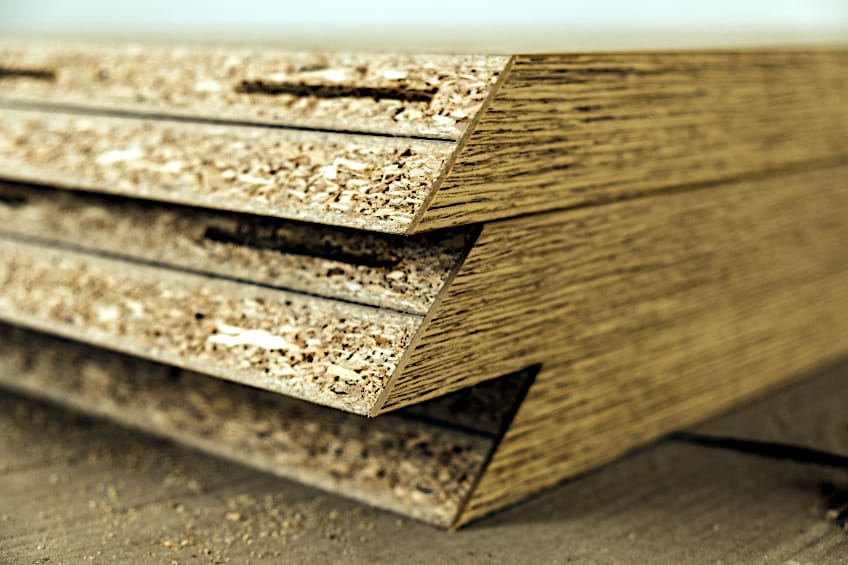
The density of particle board isn’t the only thing that affects its price though. We mentioned previously that run-of-the-mill particle board is the least expensive because it is untreated, but you can purchase particle board that has been veneered and/or laminated. This type of particle board is “ready to use and therefore costs significantly more off the shelf.
If you’re looking for a really high-end particle board, you should consider getting your hands on some cement-bonded particle board. This particle board uses synthetic cement instead of resin as a binding agent, with the wood particles acting as a filler. This type of particle board is extremely strong and can be used for a wide variety of heavy-duty applications.
Particle Board vs. Other Engineered Woods
As we mentioned previously, plywood is just one of a wide variety of engineered woods that can be used for various applications. Generally speaking, certain engineered woods are used for certain applications, usually ones that best suit their inherent properties. This being said, let’s have a look at how particle board stacks up against other engineered woods used for similar applications.
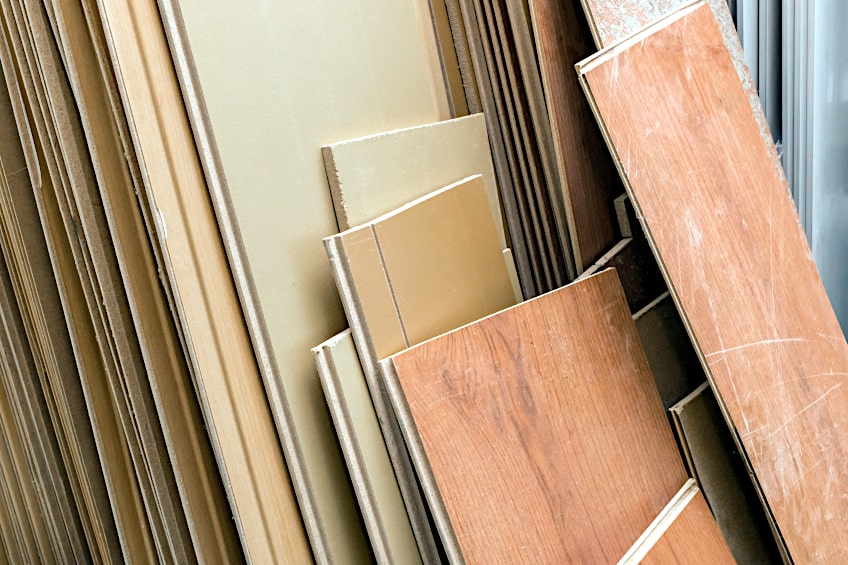
Particle Board vs. MDF: Which Is Better?
Particle board vs. MDF: which is better? Particle board and MDF are often confused with one another, and understandably so. Both are made of a combination of wood particles and resin which are heat pressed together to create construction material. Both don’t do too well when exposed to water, especially when they are untreated and left exposed to the elements.
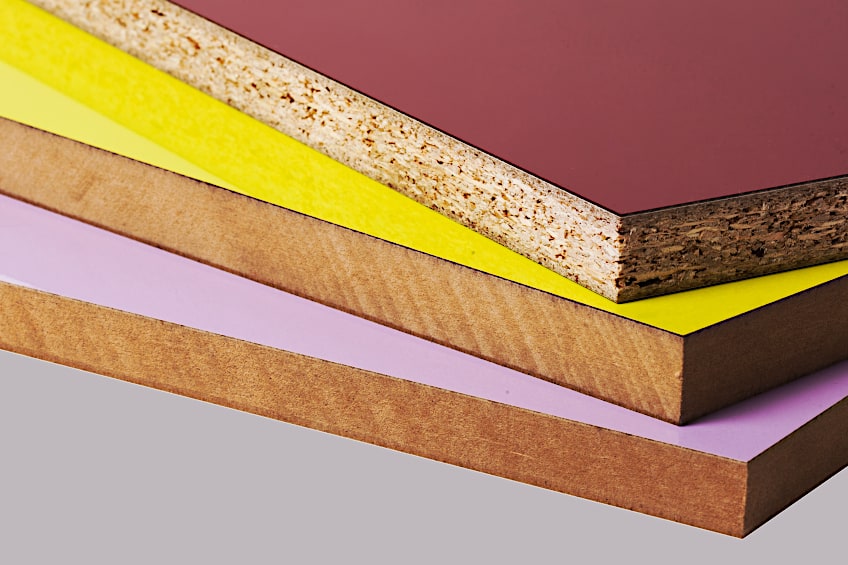
As you can see, they’re quite similar, but they aren’t the same. Objectively speaking, MDF is a lot better than particle board, especially considering they are often used for the same applications. MDF is more rigid, is capable of bearing a load for longer, and is more robust compared to particle boards.
MDF is also considered to be more “stable” than particle board when being worked by hand.
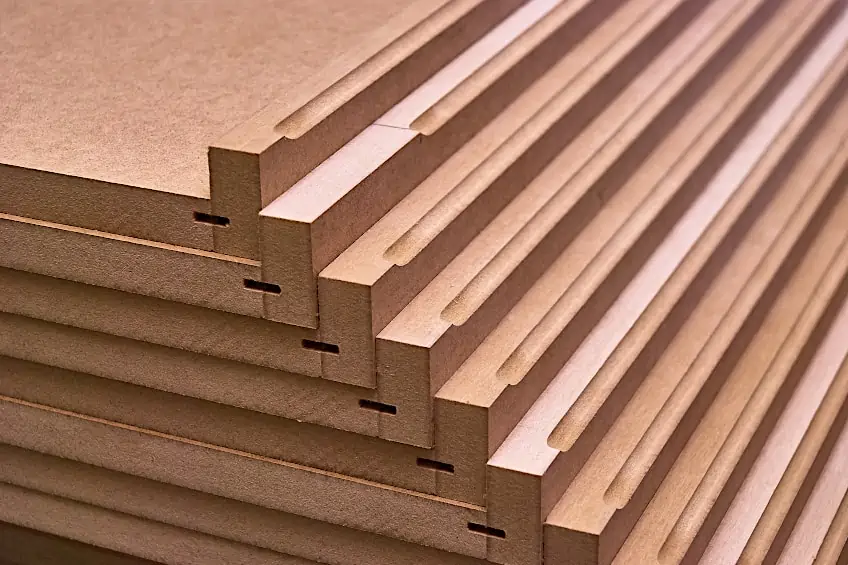
Both boards tend to produce a lot of wood dust when being cut or sanded, and both of them should not be used for long-term load-bearing applications. Additionally, even though MDF is marginally better than particle board, it is noticeably more expensive, even when untreated, which tends to be a deciding factor for a lot of crafters.
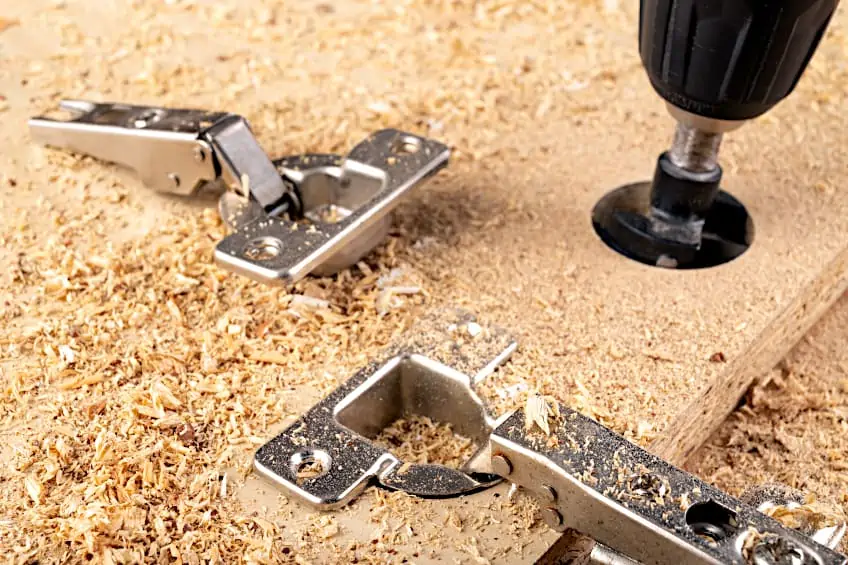
Particle board vs. MDF: Which one is better, then?
Well, it depends on what you’re looking for. If you’re looking for a wood alternative that is cheap and will only be used for aesthetic applications, a single-layer particle board should be perfectly fine. On the other hand, if you’re looking for a light-duty wood alternative that will be used occasionally in addition to looking good, MDF is the better option.
As with any material, understanding its tolerances and the application it will be used for is of the utmost importance when making the right choice. After all, you wouldn’t use toothpaste to wash your face or your facecloth to brush your teeth now, would you? Sure, it might work, but since neither is being used for its intended application, the result will be less than satisfactory.
Particle Board vs. Plywood: Which Is Better?
The terms particle board and plywood are often used interchangeably, but in reality, they could not be any more different. Particle board plywood might be made out of wood pieces, but the manner and composition in which those wood pieces are joined to form particle board and plywood are completely different.
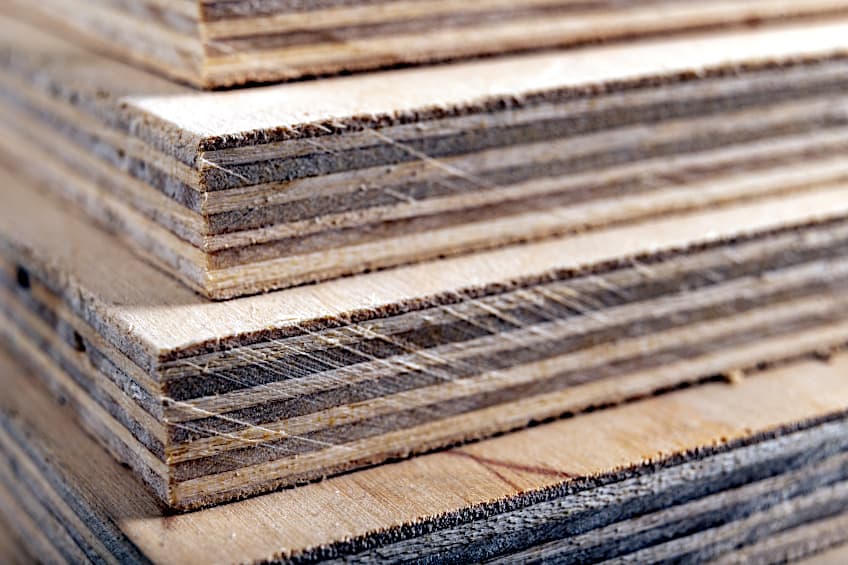
Unlike particle board, plywood is not made out of wood filings that have been heat pressed together using adhesive. Plywood is made of thin layers of wood that have been layered on top of one another and stuck together with resin.
The resin acts as a water-resistant adhesive that holds together extremely dense blocks of plywood.
There are various grades of plywood that can be purchased both in-store and online, each of which has been designed to be denser and more durable than the next. Plywood is easy to use and cheap to make, which has made it quite popular in the home improvement and crafting industries particularly.
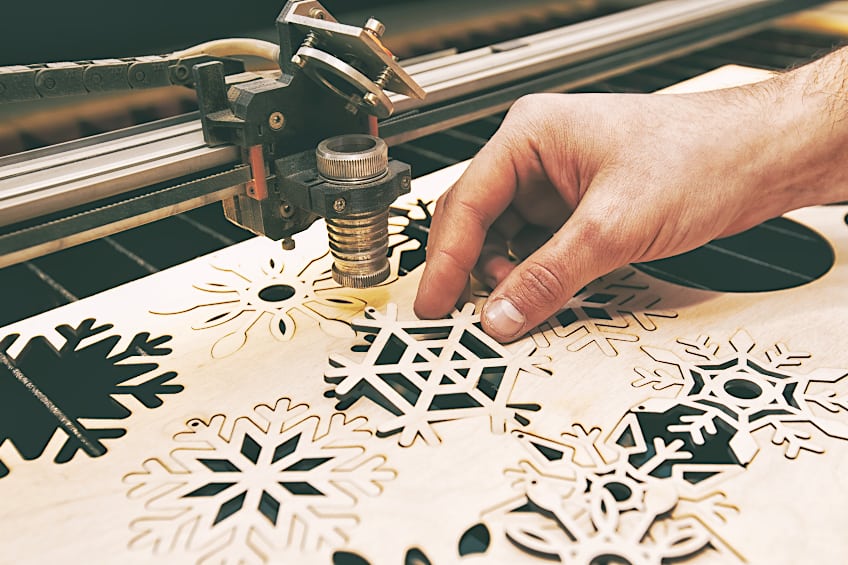
The plywood vs. particle board debate has been going on for a while, so which one is better? Well, it really depends on the application you intend to use it for. Plywood tends to be more durable, and water resistant and has better insulating properties compared to particle board.
However, its improved quality means that plywood is noticeably more expensive than particle board.
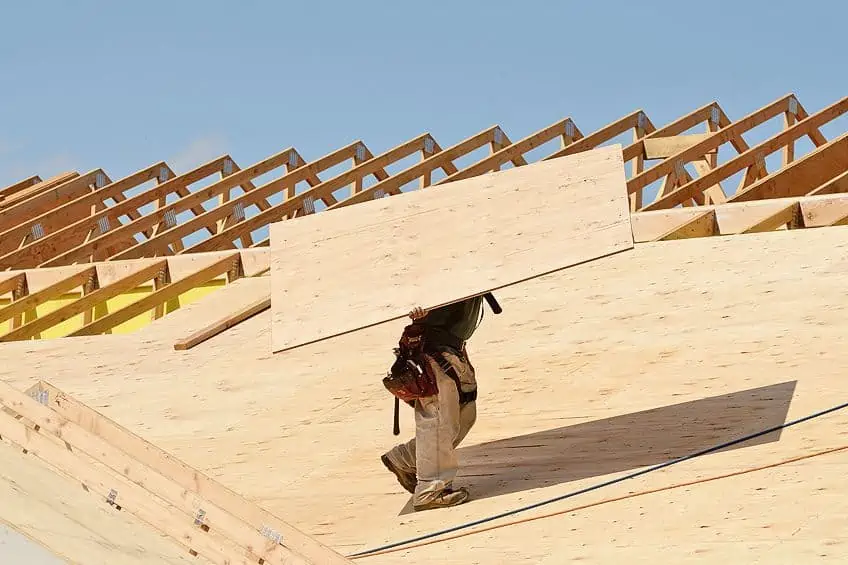
This means that the plywood vs. particle board debate usually comes down to what the material will be used for.
Because particle board is more robust and therefore more versatile, it tends to be used for everyday applications a bit more. This being said, objectively speaking, plywood is superior to particle board based on what each material is used for, but it does tend to cost a bit more.
What Should You Look for When Buying Particle Board?
When buying many materials there are certain things you should be are of when buying particle board. As we mentioned previously, not all types of particle board ate created equal, therefore you should be wary of what you’re buying.
This being said, here is a thing you should look out for when purchasing particle board.
Grade of Particle Board
Although most of us think of particle boards as one type of material there are actually various grades of particle board that can be purchased both in-store and online. The most commonly used grades are single, double, and tripped layered particles board, each of which is priced differently. Usually, the higher the layer count, the more expensive the particle board.
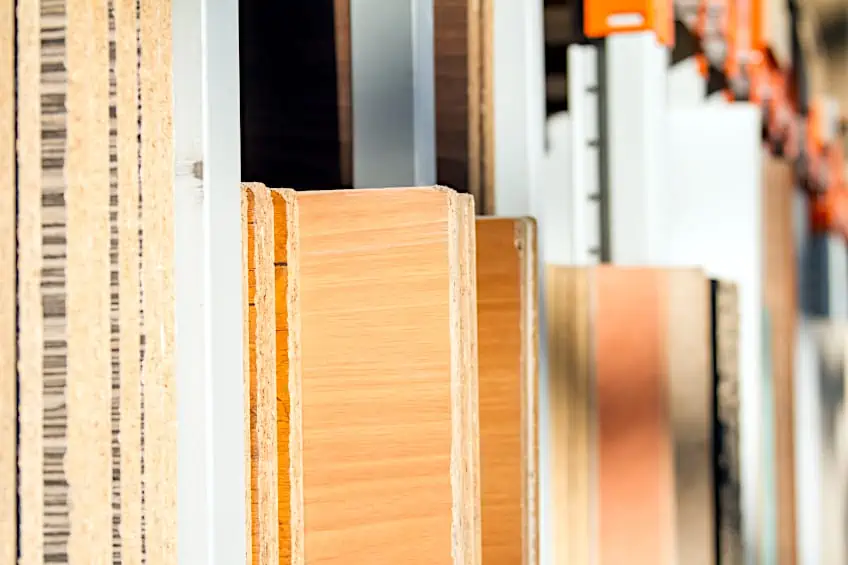
Type of Particle Board
Just as there are different layers of particle board there are also different types. Different types of particle board are used for different special-use applications. There is laminated particle board, cement particle board, and melamine particle board which are all more expensive and far more durable than regular particle board.
Always ensure you have the type of board that is suited for your intended application.
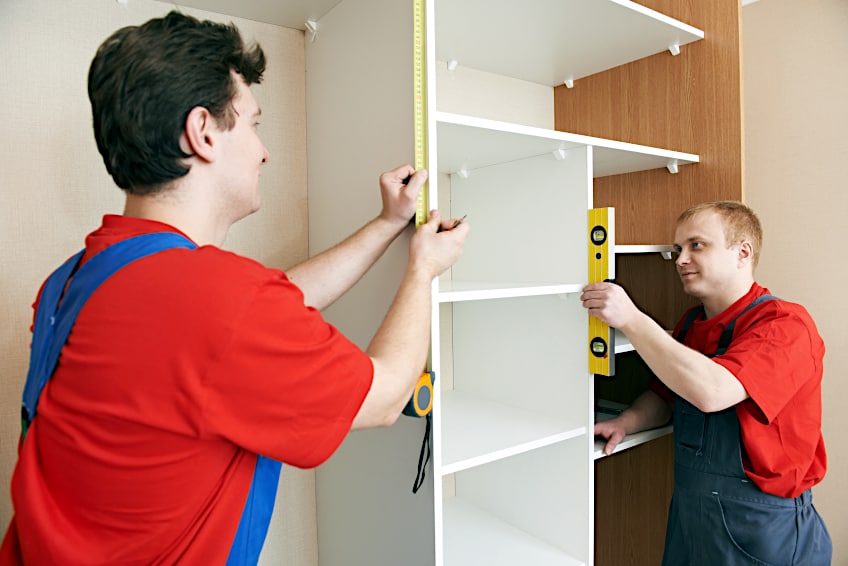
Particle Board Finish
Particle board is just like any other type of engineered wood. Not only does it come in a variety of grades and types, but there are also a number of finishes to choose from. The most popular of these finishes tend to be a laminated or veneer surface, as they are easy to clean, and hard-wearing and they look good in pretty much any setting you can think of.
They are also pricey, so if you don’t need your workpiece to look good, we recommend sticking to regular particle board.
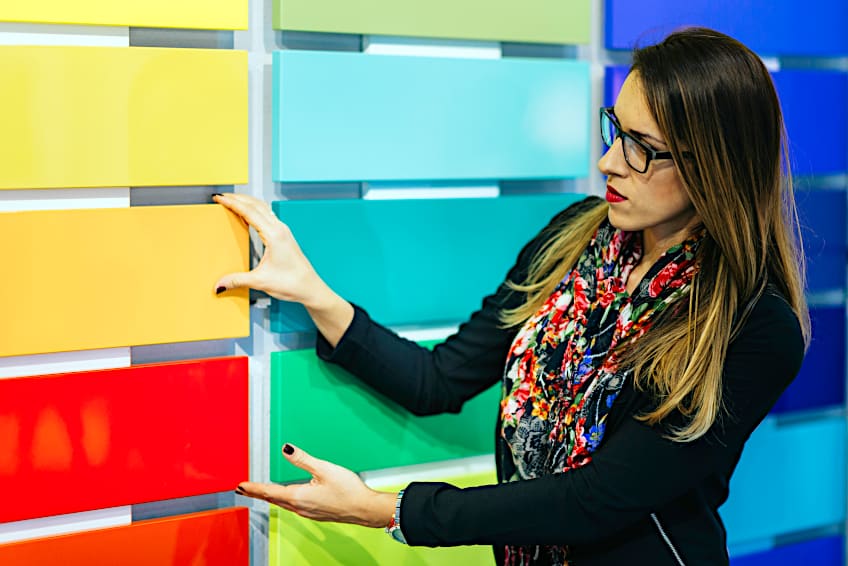
Can Particle Board Work With Fasteners?
This is one of the most important things to look out for if you’re using particle board for construction or crafting applications. Why? Well, some types of particle boards don’t do too well when fasteners are driven into them, especially those that aren’t self-tapping.
Keep in mind that the denser the particle board, and the more layers it consists of, the better it will handle screws, nails, and/or bolts.
Tips for Working With Particle Board
Working with particle board is much the same as working with MDF or any other kind of heat-pressed engineered wood. This being said, here are some tips and tricks you should keep in mind when working with particle board, and remember to always ensure that you’re wearing the appropriate personal protective gear when you do!
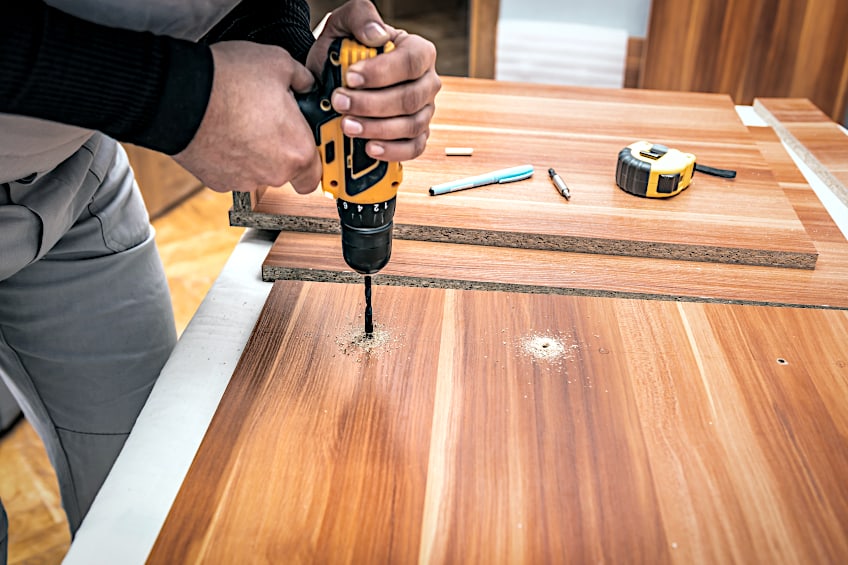
Integrate Your Particle Board
Particle board is very versatile not only as a surface board, but it can be used as a backing for other materials too. Learning to use particle board with solid wood, metal, plastic, resin, and even other engineered wood can save you loads of time and money!
All that you need is a little imagination, and the possibilities are endless.
Beware of Dust
When working with particle board it is extremely important that you remember to wear a mask, gloves, and eye protection. Why? Sanding, cutting, sawing, or breaking particle board can produce a lot of dust, which can be inhaled and cause serious discomfort. Always ensure that you have a tarp laid down and that your workspace is well-ventilated.
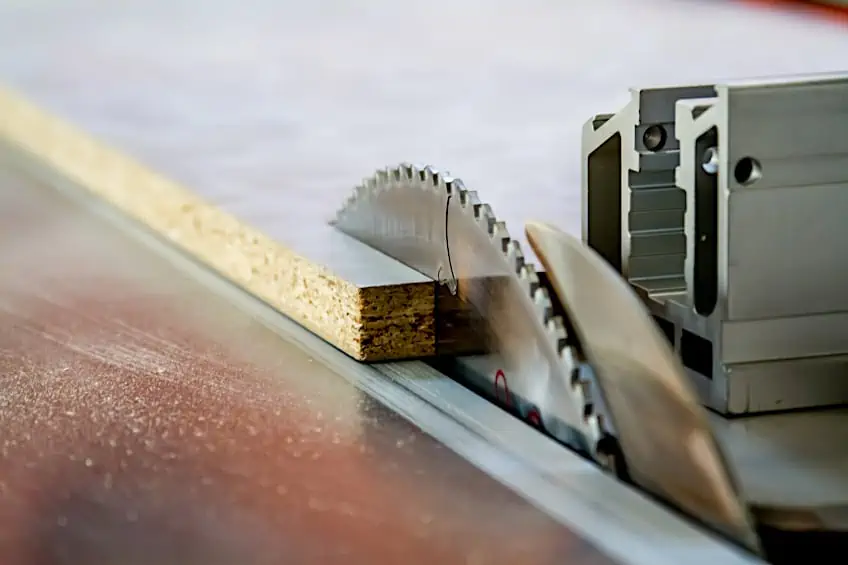
Avoid Impact and Abrasion
This is especially important if you happen to be using a single-layer particle board. Particle board is generally quite brittle, so dropping it or causing it to impact with harder objects can result in your entire board being ruined. This being said, it’s best to be extra cautious and ensure that your board is properly secured whenever it is being transported.
Drill and Countersink Before Using Fasteners
Particle board can be a difficult material to use with screws and bolts. Why? Well, when one is driven into the board, it tends to crack the surface and force wood particles to the surface. The best way around this is to drill a hole with a countersink drill bit beforehand.
Once the surface has been prepared, you can then insert your fastener.
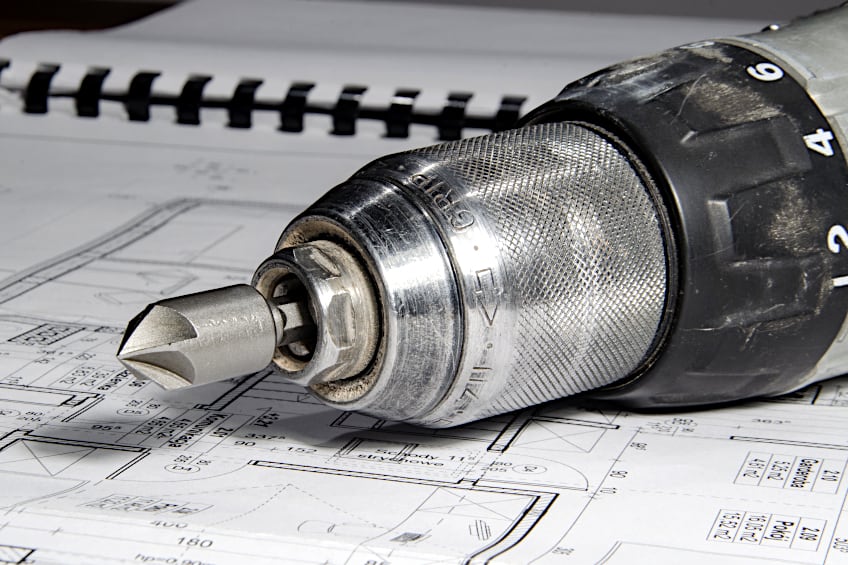
Avoid Moisture as Far as Possible
It’s common knowledge that you should never allow your particle board to get wet. Remember that particle board is made of loads of tiny wood fibers, which means that if they come into contact with water they will swell up, cracking and splitting your board.
This isn’t something you need to worry about if you have purchased treated particle board, or if you have treated it on your own.
Reinforce Suspended Surfaces
It should go without saying that particle board should not be used for load-bearing applications, especially if the application is long-term. If you’re out of options and particle board is your only choice though, we recommend reinforcing the bottom of your particle board in the middle and at both ends to avoid eventual sagging and breakage.
Now that you know what particle board is, what it is used for, some of the pros and cons associated with using it, what to look out for when buying it, and how to make the most of your particle board, it’s time for you to get out there and out your newfound knowledge to the test. Remember to wear the appropriate personal protective gear when working with wood.
Frequently Asked Questions
Can You Use Particle Board for Furniture?
Thinking about using particle board for furniture? Particle board can be used for a number of applications in the construction of furniture including backing, stuffing, trim pieces, and baseboards. Particle board is a commonly used material in the construction of both high and low-end furnishings.
Is Particle Board Strong?
Is particle board strong? Particle board is not considered to be strong by engineered wood standards, but there are certain variations of particle wood like three-layer particle board and cement particle board which are extremely strong.
MDF vs. Particle Board: Which Is Better?
The MDF vs. particle board debate has been going on for a long time. When it comes down to it, it’s a matter of quality vs. quantity. Sure, MDF is objectively stronger than particle board, but particle board is cheaper and just as versatile as MDF.

I have been into woodworking since 2005 and woodturning since 2011. Because of my love for wood and woodworking, I started woodhappen.com to teach other enthusiasts about how to finish and seal wood, the best woodworking tools, the different types of wood, and everything else related to woodworking! Read more about me here.

